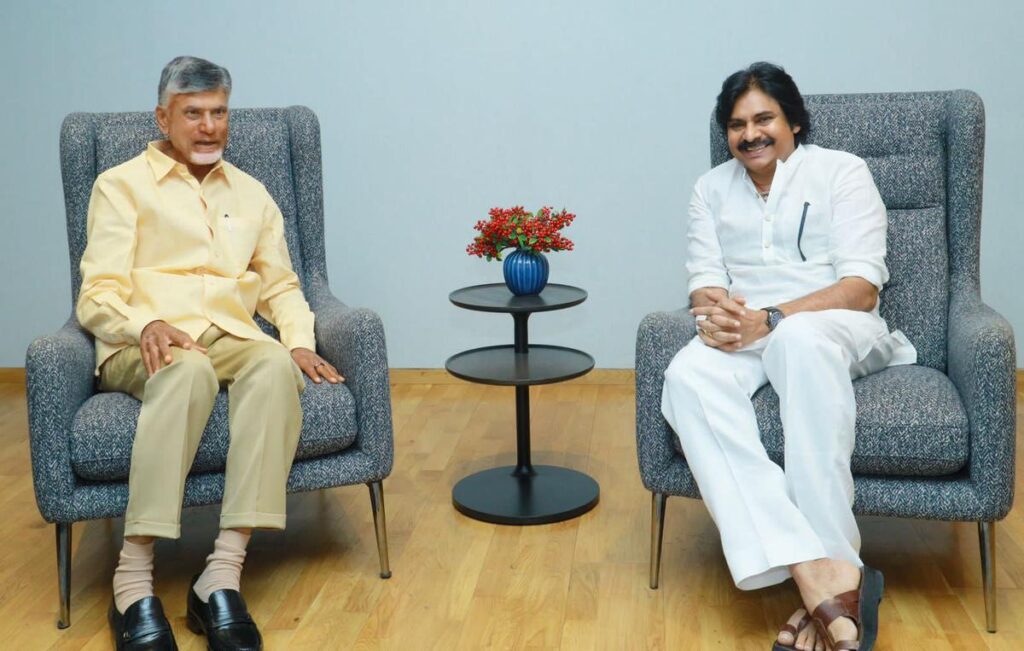The possibility of a split between the Telugu Desam Party (TDP) and Janasena Party alliance in Andhra Pradesh hinges on several critical factors. These include political dynamics, electoral strategies, and the relationship between the leadership of both parties. While the alliance is currently focused on challenging the ruling YSR Congress Party (YSRCP), its long-term sustainability remains uncertain. Below is an analysis of the situation.

The first factor that could lead to a split is the difference in political ideology. TDP is a centrist party with a strong emphasis on development, infrastructure, and welfare schemes. It has traditionally appealed to farmers, middle-class families, and backward communities. On the other hand, Janasena, led by Pawan Kalyan, adopts a more populist and youth-centric approach, targeting younger voters and the Kapu community. If these ideological differences become too pronounced, it could create friction and strain the alliance.
Electoral performance is also a crucial determinant of the alliance’s stability. If the TDP-Janasena alliance performs poorly in any elections or in by-elections, blame games could ensue. Each party may accuse the other of not contributing enough to the campaign or failing to secure votes in key constituencies. Such a scenario could erode trust and lead to a split.
The relationship between the leaders of both parties, N. Chandrababu Naidu (TDP) and Pawan Kalyan (Janasena), is another critical factor. Naidu is a seasoned politician with decades of experience, known for his strategic thinking and leadership. Kalyan, a popular actor-turned-politician, commands a significant following, especially among the youth. If personal egos or differences in decision-making arise, it could jeopardize the alliance. The ability of both leaders to work together harmoniously will be key to the alliance’s success.
Pressure from cadres is another potential challenge. Grassroots workers are the backbone of any political party, and their satisfaction is crucial for the success of an alliance. TDP cadres, who have been with the party for decades, may feel sidelined if Janasena is given too much prominence. Similarly, Janasena workers, many of whom are young and enthusiastic, may feel their party is being overshadowed by TDP. If cadres from either party feel their interests are being compromised, they could push for a split.
The possibility of alternative political opportunities also looms over the alliance. If either TDP or Janasena sees a better opportunity to align with another political group, such as the BJP or even the ruling YSRCP, it might consider breaking away from the current alliance. Political alliances in India are often fluid, and parties are known to shift allegiances based on changing circumstances and opportunities.
Despite these challenges, the alliance also has factors working in its favor. Both TDP and Janasena share a common goal of defeating the YSRCP, which has been dominant in Andhra Pradesh since 2019. This shared objective could help keep the alliance intact, as both parties recognize the need to consolidate anti-YSRCP votes to achieve electoral success.
Additionally, the complementary vote banks of TDP and Janasena could strengthen the alliance. TDP has a strong base among traditional voters, farmers, and backward communities, while Janasena appeals to the youth and the Kapu community. Together, they can create a broad coalition of voters, making the alliance a formidable force against the YSRCP.
The history of collaboration between TDP and Janasena also provides a foundation for continued cooperation. The two parties previously worked together during the 2014 and 2024 elections, which could help build trust and understanding between their leadership and cadres. This past experience may serve as a reference point for resolving conflicts and maintaining unity.
TDP-Janasena alliance’s long-term stability is not guaranteed. Factors such as ideological differences, seat-sharing disputes, electoral performance, leadership dynamics, pressure from cadres, and alternative political opportunities could all contribute to a potential split. However, the shared goal of defeating the YSRCP and the complementary strengths of both parties could also help sustain the alliance. The coming months will be crucial in determining whether the alliance holds together or fractures under pressure.